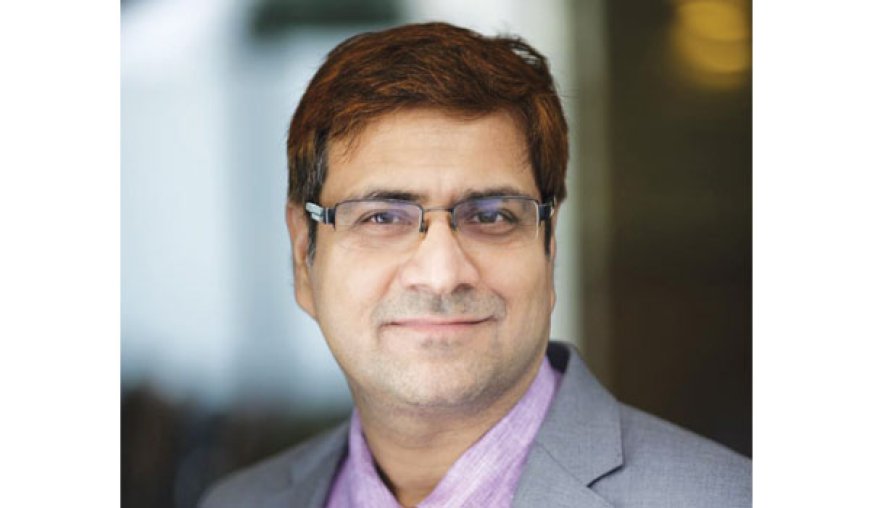We see high-speed rail as a game-changer for India's mobility scene.
We view the ongoing momentum in Indian railway infrastructure as both transformative and extremely promising. The industry is witnessing a shift in paradigms, fuelled by modernization, high-speed connectivity, digitization, and a high degree of focus on sustainability.

How do you view the current developments happening in railway infrastructure?
We view the ongoing momentum in Indian railway infrastructure as both transformative and extremely promising. The industry is witnessing a shift in paradigms, fuelled by modernization, high-speed connectivity, digitization, and a high degree of focus on sustainability. One of the most notable developments is the Centre's ambitious proposal to upgrade more than 1,000 railway stations under the Amrit Bharat Station Scheme—a first-of-its-kind drive to modernize infrastructure and upscale passenger experience nationwide. India's railway stations are on the threshold of an extraordinary makeover, and the entire ecosystem is welcoming innovation at an unprecedented scale. From the introduction of semi-high-speed and bullet trains to the widespread emphasis on electrification and green energy, these innovations are redefining the future of rail travel.
For Egis, this is in perfect harmony with our international expertise and decades-long tradition of constructing smart, efficient, and future-proof transportation systems. We are pleased to enable this transformation with our participation in various strategic rail and metro projects, driving a safer, more integrated, and sustainable mobility environment for India. We leverage rich domain knowledge in feasibility, detailed engineering design, project management consultancy (PMC), and execution of state-of-the-art technologies such as BIM and Digital Twin for rail infrastructure. Our efforts align with the government's goal of establishing Indian Railways as a world-class, sustainable, and people-oriented transport network.
While the sector keeps developing, we are constantly dedicated to collaborating with key partners to construct strong infrastructure linking communities, stimulating economic growth, and enhancing India's long-term development ambitions.
How do you look at the significant advancements in the metro rail segment?
India's metro rail industry has seen phenomenal growth in the last decade, and we in Egis consider this evolution as the hallmark factor of the nation's urban transformation process. Owing to burgeoning urbanization and growing needs for effective public transport, metro rail networks are becoming instrumental in enhancing urban mobility, easing congestion, and minimizing carbon footprints. From the growth of networks in core cities like Delhi, Mumbai, Chennai, and Kolkata to the establishment of new systems in new urban agglomerations like Nagpur and Surat, India's metro sector is making a record in scale, pace, and technological innovation. Integration of cutting-edge systems like Communication-Based Train Control (CBTC), BIM, and Digital Twin technologies further solidifies the sector's focus on safety, efficiency, and sustainability.
How are you associated with the modernisation and development of Indian railway and metro rail infrastructure?
At Egis in India, we are proud to be actively engaged in the modernisation and growth of the country's railway and metro rail infrastructure. Our association runs across significant national and state-level projects where we deliver end-to-end services like feasibility studies, design and engineering, project management consultancy (PMC), general consultancy, and technical advisory.
Egis is honoured to be a part of this growth narrative we are associated with numerous landmark railway and metro projects throughout India, including KRIDE - Karnataka Rail Infrastructure Development Company, Surat Metro, Delhi Metro, the Delhi–Meerut semi high-speed corridor, Chennai Metro Phase I, Kolkata East-West Metro, Mumbai Metro Line 3, and Nagpur Metro—providing consultancy, engineering, and project management services that fuel sustainable urban mobility.
Railways still need a lot more developments in rail freight services and infrastructure. How do you look at this scenario?
We view this as a great opportunity for innovation and growth. Rail freight is a key driver of economic efficiency and sustainability, and the Indian government's emphasis on growing this segment is both strategic and timely. With plans such as the Dedicated Freight Corridors (DFCs), the PM Gati Shakti Master Plan, and multimodal logistics parks, India is building the foundations for a more efficient, high-capacity, and integrated freight network. These initiatives are necessary to lower logistics expenses, divert cargo from road to rail, and serve the increasing needs of industries in the nation.
Egis has rich global experience in freight planning, logistics infrastructure, and multimodal integration. We are uniquely positioned to assist Indian Railways with advanced solutions including corridor planning, terminal planning, BIM-based project management, and digital solutions improving operational efficiency and network optimization.
We are confident that through developing rail freight infrastructure and making it compatible with best practices in modern logistics, India can realize economic and environmental benefits. Egis is determined to be a long-term collaborator on this mission, driving smart, sustainable, and scalable freight solutions to make India a world-class logistics powerhouse.
How do you look at the opportunities for high-speed rail services in India with the first corridor expected to start in 2028-29?
We consider the upcoming launch of India's first high-speed rail corridor as a milestone in the history of the country's transportations. This project marks a giant step towards mobility for the future and showcases India's increasing focus on world-class infrastructure, speed, and sustainability. The Mumbai-Ahmedabad High-Speed Rail (MAHSR) corridor, which is due to come into operation by 2028–29, will revolutionize intercity travel by providing quicker, safer, and more efficient connectivity.
Apart from passenger convenience, this project will have major economic dividends—fueling regional growth, generating thousands of jobs, and establishing new standards for engineering excellence and technology uptake. For Egis, with a long history of international experience in high-speed rail systems, this presents thrilling possibilities to share our skills in such areas as feasibility studies, system integration, digital engineering, safety planning, and sustainable design. We see high-speed rail as a game-changer for India's mobility scene. It will supplement current modes of transport while creating new urban corridors of growth and development.
What is the scope of undersea rail connectivity with the proposed Dubai-Mumbai rail connectivity project in the offing?
Dubai-Mumbai undersea rail is a visionary proposal that, if achieved, might change the very concept of world connectivity and intra-regional collaboration. We regard it as an interesting frontier in engineering and innovation. With our worldwide experience of dealing with sophisticated infrastructure and tunnel projects, we believe we have the capability to be involved in the planning and execution of such high-profile plans. It holds out vast potential for economic integration, tourism, and quicker cross-border travel, a giant leap toward the future of long-distance, sustainable travel.
What opportunities do you look forward to in the future Indian railway infrastructure?
The future of Indian rail is extremely exciting, and Egis is excited to be a part of this game-changing journey. From high-speed and hyperloop corridors to modern tunnelling and digital integration, these innovations promise tremendous opportunities for innovation, sustainability, and cross-border collaboration. With our rich experience in large-scale rail systems and intelligent mobility, we hope to create the next generation of transport solutions faster, greener, and forward-looking. We look forward to continuing our collaboration with public and private stakeholders to co-create next-generation rail solutions that not only serve India but also inspire mobility transformation across the region.







